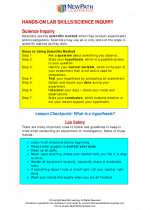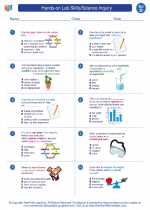First Aid
First aid is the initial assistance or treatment given to someone who is injured or suddenly taken ill. It is important for everyone to have a basic understanding of first aid, as it can make a significant difference in the outcome of an injury or emergency situation.
Basic First Aid Skills
- Assessment of the situation
- Cardiopulmonary resuscitation (CPR)
- Control of bleeding
- Treatment of shock
- Management of fractures, sprains, and strains
- Bandaging and wound care
- First aid for burns, bites, and stings
- Recognizing and responding to medical emergencies such as heart attacks and strokes
Study Guide
Assessment of the Situation
When providing first aid, it is important to assess the situation to ensure the safety of both the injured person and yourself. This includes checking for any hazards, assessing the nature of the injury or illness, and determining the appropriate course of action.
Cardiopulmonary Resuscitation (CPR)
CPR is a life-saving technique used in emergencies such as cardiac arrest or near drowning. It involves chest compressions and rescue breaths to maintain blood circulation and oxygenation.
Control of Bleeding
Learning how to control bleeding is crucial in preventing further blood loss and reducing the risk of shock. This may involve applying direct pressure, elevating the injured limb, and using bandages or dressings.
Treatment of Shock
Shock can occur as a result of severe injury or illness. First aid for shock involves keeping the person warm, maintaining their airway, and seeking medical help promptly.
Management of Fractures, Sprains, and Strains
Understanding how to immobilize and support injured limbs can help prevent further damage and alleviate pain for the injured person.
Bandaging and Wound Care
Proper bandaging and wound care can help prevent infection and promote healing. This includes cleaning the wound, applying antiseptic, and using appropriate dressings.
First Aid for Burns, Bites, and Stings
Knowing how to provide first aid for burns, insect bites, and stings is important in alleviating pain and preventing complications.
Recognizing and Responding to Medical Emergencies
Being able to recognize the signs of medical emergencies such as heart attacks and strokes and knowing how to respond can be life-saving.
Remember, while it is important to have a basic understanding of first aid, it is not a substitute for professional medical care. In an emergency, always seek help from medical professionals as soon as possible.
By familiarizing yourself with these basic first aid skills, you can be better prepared to respond to emergencies and provide assistance to those in need.
[First Aid] Related Worksheets and Study Guides:
.◂Science Worksheets and Study Guides Fourth Grade. Hands-on Lab Skills/Science Inquiry

 Worksheet/Answer key
Worksheet/Answer key
 Worksheet/Answer key
Worksheet/Answer key
 Worksheet/Answer key
Worksheet/Answer key
